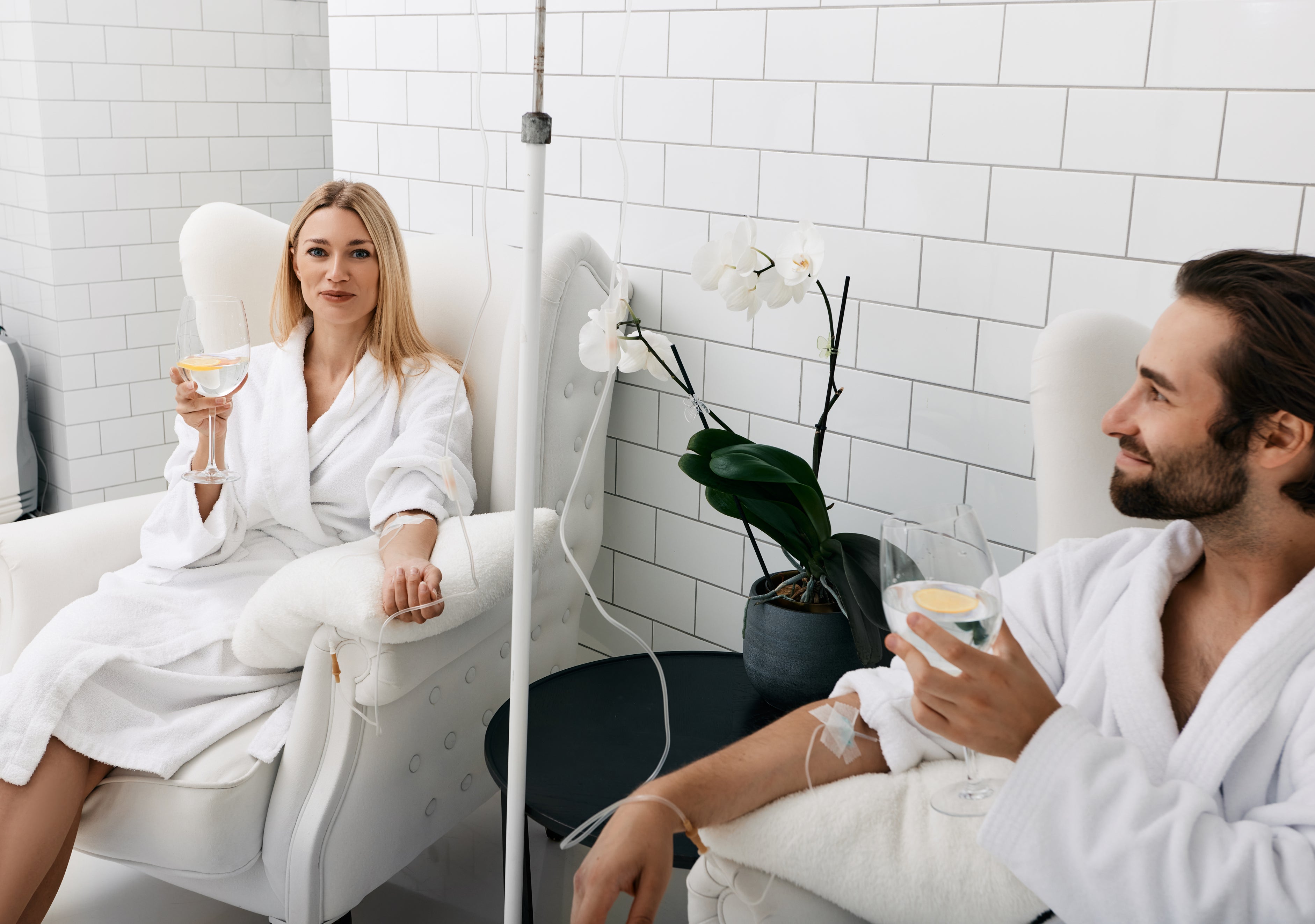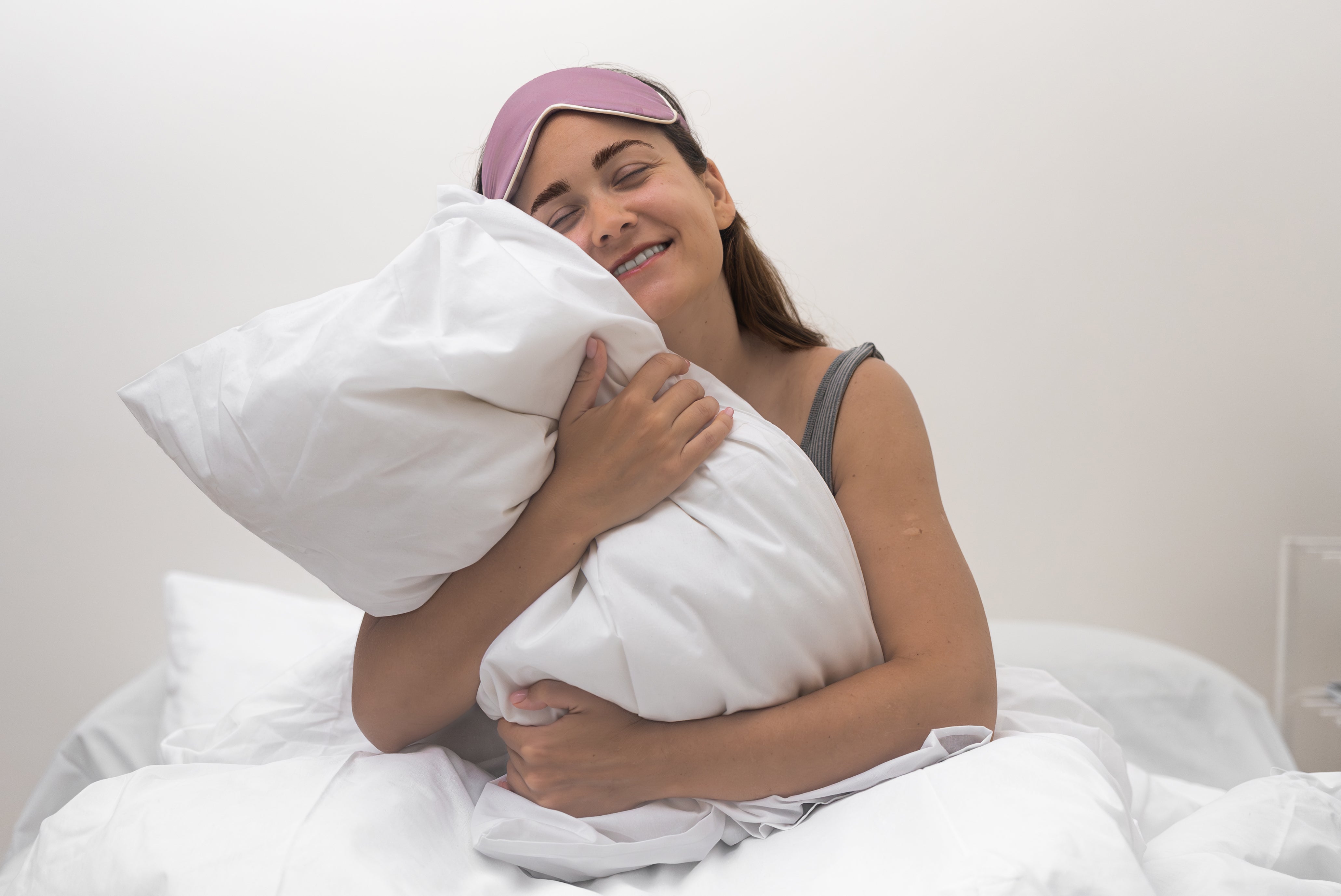There are so many things that can disrupt your sleep! A stressful day at work, an after-dinner coffee, a bad pillow, or an earworm can rob you of the sleep you deserve. If you aren’t familiar with the term earworm, the title of this blog post may have your skin crawling. It isn’t the creepy crawler you may be picturing, but it can be just as unpleasant. An earworm is a term used to describe the phenomenon of a song or phrase stuck inside your head that repeats on loop.
You’ve likely experienced it at one point. Maybe it’s one line of a song, the intro to your toddlers' favorite TV show, or a trending phrase on TikTok. It can feel like your brain is skipping, and the sound plays again and again. According to music psychologists, at least 90% of people experience an earworm each week.
Not every sound is “earworm worthy.” Studies have found that earworms have particular characteristics like big up and down leaps in notes, upbeat tempos, and popular pitch patterns. A 2016 analysis completed by the University of London asked 3000 people to name the songs that have turned into earworms. The researchers then analyzed the 100 most popular ones and found that these sounds are somewhere between a novel and conventional tune. Further, they found that these earworms happen when your mind wanders and often last from a few minutes to a few hours.
Earworms aren’t new. As long as there have been catchy melodies, earworms have existed. However, we now have engineered earworms. TikTok, Instagram reels, and Snapchat contain countless clips with engineered earworms that are much more likely to get stuck in your head.
Many superstars got their start on TikTok. Award-winning artists like Lizzo and Megan Thee Stallion had songs go viral on the app, which helped sky-rocket their careers. Though this may happen organically for some artists, it isn’t always the case. For example, Megan Thee Stallion’s viral hit Savage was essentially engineered to give the listener an earworm. According to a Bloomberg article released earlier this year, TikTok’s management team provided Megan Thee Stallions team with user data and advised them on how to create an infectious hit. In addition, the article stated that company executives determine which videos go viral. TechCrunch further examined this information, looking at how songs are now being engineered to give people an earworm – 15 seconds or less of a song that plays on repeat.
Over 1 billion people use TikTok and are much more likely to acquire an earworm as a result. So, why are we talking about earworms on a sleep blog? Great question! It’s because recent research has revealed that earworms can disrupt your sleep. This means that not only will the blue light from your phone cause sleep troubles, but the specially engineered songs you hear on repeat will hurt your sleep.
Due to the increase in TikTok use, several studies have looked at earworms' impact over the past year. Psychology Today stated that “music can burrow into your brain like a worm and lower your sleep quality.” It isn’t only caused by those short clips of music on social media, either. Listening to catchy songs before bed can also do more harm than good.
So even though it may be tempting to kick back on your buckwheat pillow and listen to music or scroll through social media, the sounds are disrupting your sleep. A study from Baylor University scientists found that people who listen to music regularly are more at risk for persistent nighttime earworms. Their first cross-sectional study included 199 participants, with 33% reporting earworms at bedtime. These earworms were experienced when they were falling asleep, when waking up in the night or in the morning. The amount of music they listened to was self-reported, and they found that those who listened to music more were more likely to experience earworms at night. They also found that greater music listening resulted in worse sleep. More specifically, they discovered that sleep-related earworms reduced sleep quality by 54%!
The researchers took this research further and examined participants' blood oxygen levels, heart rate, brain waves, eye and body movements, and breathing patterns. The 48 young adults in this second study were randomly assigned lyrical or instrumental versions of pop songs a half hour before going to sleep. When the participants woke up the next day, they were asked if they had a song, melody, or sound stuck in their head and if they had experienced one when they tried to fall asleep.
Interestingly, the polysomnography results showed that those who listened to the instrumental versions of pop songs had a worse sleep than those who listened to the lyrical versions. As expected, those who did have a sleep-related earworm reported more trouble falling asleep and poorer sleep efficiency.
Both studies indicated that the more music you listen to, the more often you will experience a sleep-related earworm. Further, the closer you are to bedtime when listening, the more likely you’ll experience these earworms.
In a third study, the researchers also looked at brain activity using electroencephalography (EEG) data. They found that listening to music before bed increased frontal lobe activity. This frontal slow oscillation activity is associated with the consolidation of memories when we sleep, suggesting that earworms are created with the memory-reactivation process. This means the brain spontaneously replays melodies during our sleep, transferring information into cortical networks. Music processing continues as you sleep and make sleep more challenging. Many still believe that particular music, like classical music, can help with sleep, but catchy songs that meet the earworm criteria should be avoided.
With this study, as well as research on blue light from electronics, it’s no surprise popular social media apps are bad for sleep. For example, last year, TikTok was dubbed “the worst social media app for sleep.” The fact that the app is so interactive makes it extra challenging to zone out and sleep. For example, you may find a trending video and go down a rabbit hole watching all the videos made to that one viral sound. You end up scrolling, reading comments, and liking posts, all while this one 15-second song plays again and again and again, embedding itself in your brain.
How to Banish an Earworm Before Bed
If you have a pesky earworm you want to banish there are things you can do. According to the researchers at the University of London, you can listen to the whole song again. This will often eliminate the one phrase from being stuck in your head.
Alternatively, you can listen to a completely different song which will distract your brain and cause it to forget the earworm. You can also distract yourself or try to ignore it. Finally, if all else fails, you can chew some gum. A study published in The Journal of Experimental Psychology found that when people chewed gum while listening to a catchy song, they were less likely to develop an earworm.
Michael K. Scullin, the principal investigator at Baylor University’s Sleep Neuroscience and Cognition Lab, says, “there are lots of ‘fads for improving sleep, but it’s important to remember that obtaining great sleep beings with prioritizing sleep. Picking an earlier bedtime and consistently sticking to it is one of the most important things a person can do to feel well-rested and to flourish during daytime hours.”
Limit your screen time before bed. Though it may seem like a relaxing, mindless activity, videos on TikTok, Instagram, or YouTube often have catchy songs that can cause these sleep-reducing earworms. Additionally, avoid pop songs (both lyrical and instrumental) and opt for classical music with unpredictable tempos (read more on the best music for sleep here). Finally, as earworms can last up to an hour, you should avoid the catchy tunes for 2 hours before bed. Not only will it help prevent an earworm, but you won’t be affected by the blue light these screens give off.
When you lay on your buckwheat pillow, sleep should be the only thing you’re doing. Keep your phone in another room and enjoy an earworm-free sleep. Try a more passive activity like meditation if you need some help winding down at the end of the day. When you are seated comfortably on a meditation pillow and focus on your breath, you can rid yourself of any lingering earworms, reduce anxiety, clear your mind and help get your body in a sleepy state.
Earworms can show up in meditation (this is actually quite normal), but experts suggest acknowledging them and then letting them go. You can do this with visualization by imaging the earworm as a cloud that is passing in the sky, and then it’s gone. When it appears, go back to focusing on your breath.
Don’t let an earworm keep you up at night! A good night’s rest on a supportive pillow like a millet pillow is critical to your physical and mental health, so turn down the volume and have the sweet dreams you deserve!






